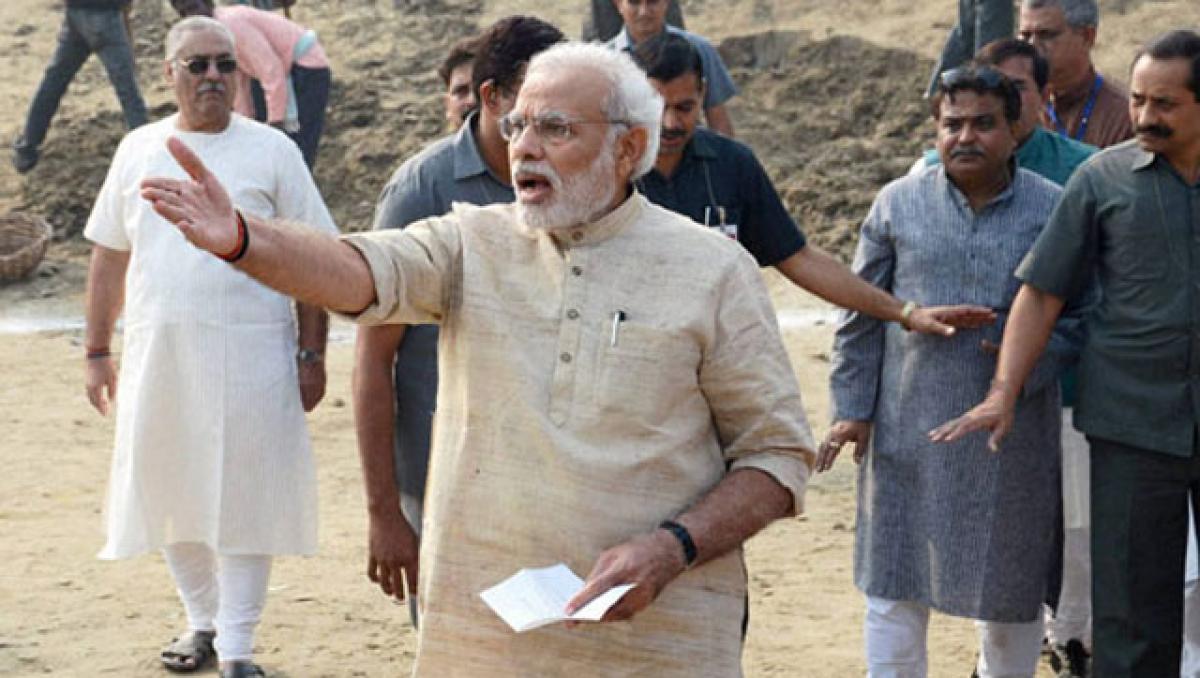Live
- Constitution debate: PM Modi hails 'Nari Shakti'; makes strong pitch for 'United Bharat’
- Bihar: Inquiry initiated against principal who went to buy veggies during school hours
- TN: DMK postpones executive meet due to heavy rains & Parliament session
- Porous silicon oxide electrodes can fix durability issues in batteries: Researchers
- Jalandhar civic polls: AAP promises launch of 100 e-buses, round the clock water supply
- Economic upliftment of rural women is priority of Tripura govt: CM Saha
- Rajmata Jijabai Trophy: Manipur move to top of the table, T.N register first win
- Italian envoy Baroli hoping to strengthen ties with India through football
- CPI-M revokes suspension of Bengal party leader accused of sexual harassment
- Rachakonda Commissioner Emphasizes Health and Education at Uniform Diet Launch
Just In

One can juxtapose the stern treatment that MGNREGA allocations have received with the overwhelmingly generous allocation that the government has committed towards implementing the recommendations of the Seventh Pay Commission – Rs 1.02 lakh crore.
For a government that has been voted by a historic majority on the single promise of "ache din" and "vikas,” today's agrarian reality can turn into its most potent cause of demise. The agricultural growth rate is creeping towards negative territory from a dismal 0.2 per cent seen in 2014-2015. Data from the labour ministry shows that growth in rural wages slowed from a high of nearly 18 per cent in August 2013 and 17.5 per cent in August 2014 to a dismal 3.8 per cent in August 2015.
The government is currently in the dock on an ongoing PIL filed in Supreme Court about its inability to alleviate distress in a time of drought. In this battle, the government's claim to have "transformed" the UPA flagship MGNREGA programme is truly put to test. It is perplexing to note that in a situation when the rural jobs scheme is best designed to operate, it has been failing - at huge costs to the lives of the poor.
The MGNREGA has been provided with a budgetary allocation of Rs 38,500 crore for 2016-17. Though the allocation was touted to be the "highest ever," the truth appears to be far from that. After reducing the amount of funds owed to workers and material suppliers – nearly Rs 12,000 crore at the end of the year – the States are left with Rs 26,500 crore to provide employment on demand in the third consecutive year of drought faced by nearly 50 per cent of India's districts.
Given that a MGNREGA worker performs 48 days of work in a year, on an average, and that the average cost of generating one person day is Rs 215 in a non-drought year, a budgetary allocation of Rs 26,500 crore would result in supporting only 2,56,78,294 workers. This translates into the fact that only 24 per cent of workers will be provided average days of employment under the programme. If the intent of a government is indicated by where it allocates its resources, the government has a lot to answer for in this year of drought.
One can juxtapose the stern treatment that MGNREGA allocations have received with the overwhelmingly generous allocation that the government has committed towards implementing the recommendations of the Seventh Pay Commission – Rs 1.02 lakh crore. Adding to this is the enhanced budgetary allocation to defence pensions by nearly 40 per cent owing to the government’s decision of accepting the principle of ‘one rank one pension.’
The skewed burden put on the country's fiscal health by these decisions is something that has not surpassed the concerns of the government's chief economic advisor, who states in the Economic Survey 2015-16: “The implementation of the Pay Commission recommendations and the one rank, one pension scheme will put an additional burden on expenditure.”
Though mildly put, the intent of a government to scramble for funds to meet its political commitments, instead of allocating a just quantum of funds to respect the mandate of a legislation that guarantees employment by statute, especially in a drought year, is telling.
As we approach the two-year anniversary of the Modi Government, it is clear that the domestic economy has far underperformed the expectations set out in May, 2014. The global economy is most likely to remain in a low inflation low growth mode for the foreseeable future even as central banks have moved into negative interest rate territory. It is, thus, prudent to focus on the distress in the rural economy to support growth during a period when the investment and capex cycles have failed to pick up even after a sharp fall in rates.
Vatsal Srivastava

© 2024 Hyderabad Media House Limited/The Hans India. All rights reserved. Powered by hocalwire.com







